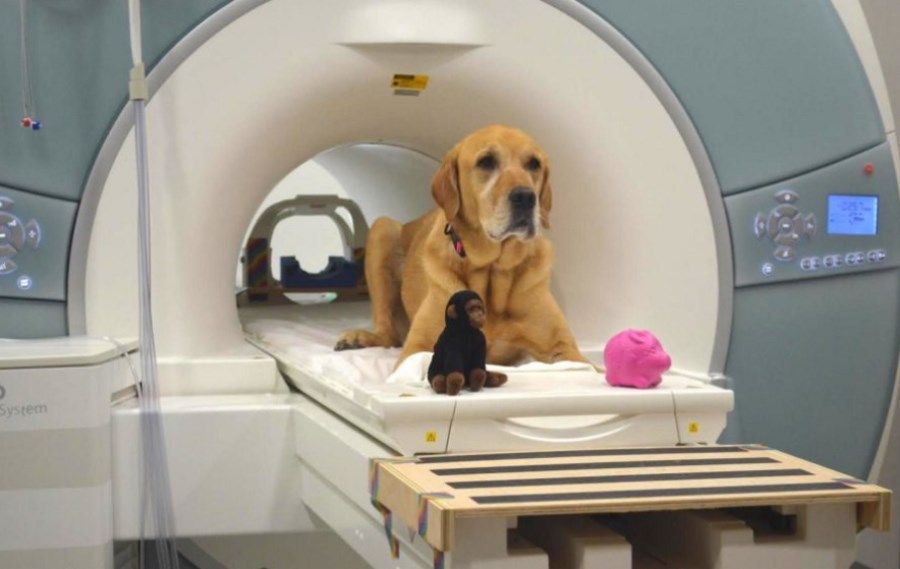How dogs understand human speech?
Experiments with dogs suggest that our four-legged companions have at least an elementary representation of the meaning of the words they have been taught and distinguish words they have heard before from those they do not.
When some re dogs hear that their owners m bind "cat", they jump up and become agitated. They may even run to the window and look around. But what does the word itself mean to a dog? Does it mean: watch out, something's going on? Or perhaps the dog actually imagines a small furry?
On the „Frontiers in Neuroscience” one of the first studies using m imaging was published zgu to see how b our four-legged companions process words that re learning to associate with objects. The study was conducted by a scientist from Emory University.
– Many dog owners in the belief that their dogs know what some of the re words, but there really isn't much evidence of in scientific evidence to support this thesis. So we wanted to get data from the dogs themselves – not just from their owners – said Ashley Prichard of Emory University, the head na the author of the study.
– We know that dogs have the ability to process at least some y aspect in human language because they can learn to obey verbal commands. However, previous research suggests that dogs can rely on many other cues ks, such as gaze, gestures, and even facial expressions of owners – added Gregory Berns, et al roposed publication.
The researchers focused on questions about the mechanism m The dogs used the bite markers to make the dogs of the scanning process in, or even what constitutes a given word to the dog. Berns initiated what he called a "doggy day". Dog Project, which he goal is to find answers to these questions. Scientists in the project have trained dogs to voluntarily undergo MRI scans while remaining motionless during the scan.
These studies contributed to a better understanding of the process occurring in the m The dog's threshold in response to the expected reward. They identified the r Also, specialized areas in the m The four-person brain is responsible for the perception of human faces and for the response to odors both humans and other dogs .
For the study, 12 dogs r of all breeds were trained by their owners to associate r e know that dogs are able to process at least some. The subjects, for convenience, had r different textures. The training consisted of instructing the ps to bring one of the items . The animals were then rewarded with food or praise. Training was considered complete when the dog demonstrated that it could r mating between two objects, consistently yielding the owner's desired.
In the course of the experiment, the dog thus trained was subjected to magnetic resonance imaging. The dog's owner stood directly in front of the dog and named the toys at intervals, then showed the dog the appropriate toys. For example, the owner of m The words that were taught to their Labrador retriever "Piggy" or "Monkey" and show the matching toy. The owner also spoke other words while deliberately babbling and then picked up new objects, such as a hat or doll.
The results of the study showed greater activation in auditory regions of the m e know that a dog's brain is more active when it hears new words than when it hears previously known words . – We expected the imaging to be r The dogs were trained to identify a toy that they could use for play in which dogs knew or did not know the words. Surprisingly, the result is the opposite of that for humans – humans tend to show more activity for familiar words – said Prichard.
Scientists think dogs may have more neural activity in for new words because they sense that their owners want them to understand what m bind and They are able to do this. – Dogs eventually want to please their owners, and perhaps r to also receive some food," Berns pointed out.
Half of ps The 12 dogs participating in the experiment showed increased activity after hearing new words in their areas zgu, which according to scientists may be analogous to the angular turn in humans, where r lexical differences. The rest of the quadrupeds The new word has shown increased activity in other areas of the m of the brain, including in other parts of the left temporal lobe, amygdala, caudate nucleus, and thalamus by.
Scientists believe that These differences may be related to differences The diversity of breeds and size at ps in, as well as with their cognitive abilities. Head A major challenge in mapping the process of in cognitive m of the dog, as the researchers acknowledged, is r Variety of shapes and size in the dog's m zg depending on the breed.
– Dogs may have r The different abilities and motivations to learn and understand human words in, but appear to have a representation of word meaning in which that they were taught, apart from the conditioned reflex – Berns said.
The study's conclusions do not mean that spoken words are the most effective way for an owner to communicate with a dog. Scientists have admitted that the reactions of dogs are more attuned to visual and olfactory cues than to verbal.
– When people want to teach a dog a trick, they often use a verbal command, because that's how people learn. However, from a dog's perspective, a visual command may be more effective kt a dog will learn a trick faster – explained Prichard.



